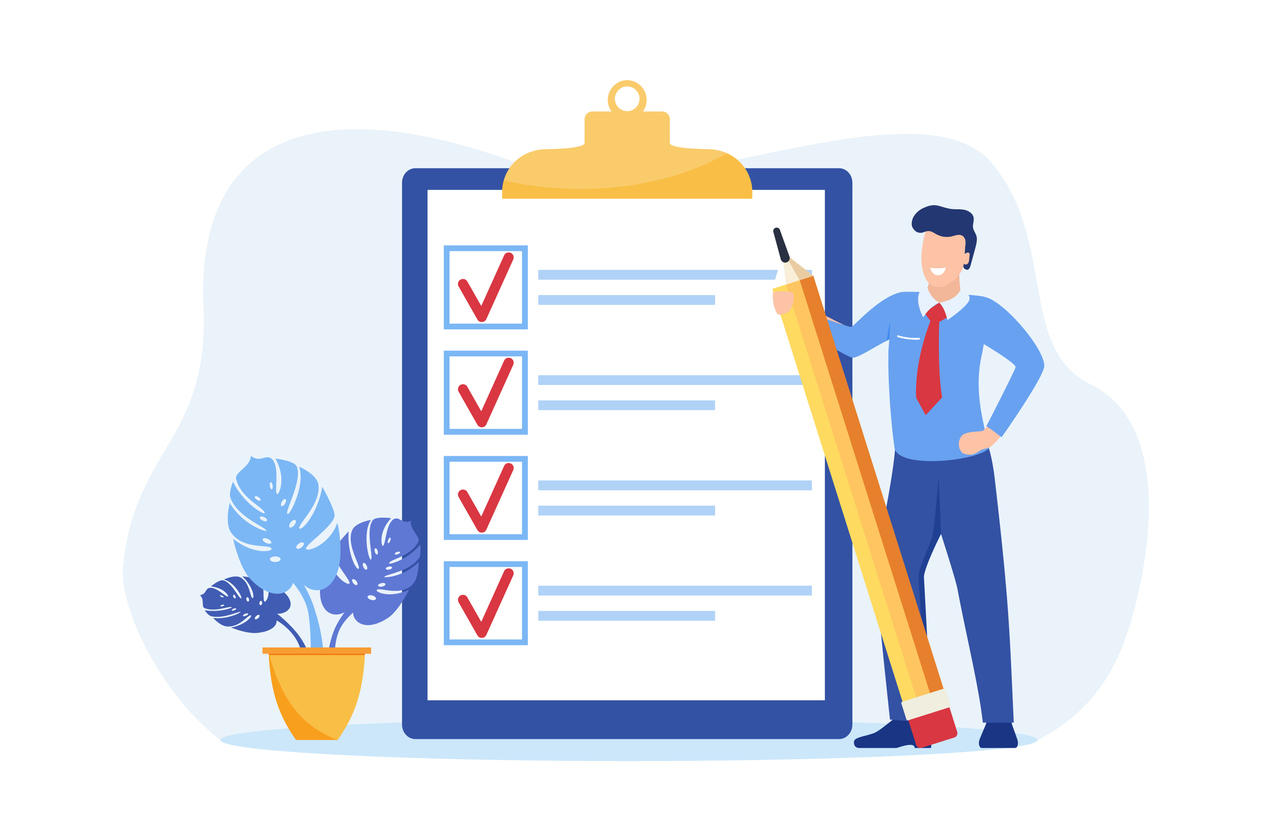What is intranet governance?
Intranet governance is setting up and managing an organization’s intranet. It involves defining roles and responsibilities, establishing content guidelines, setting user permissions and access, and implementing intranet security measures. A well-defined governance plan ensures your intranet is managed effectively and efficiently.
Intranet Governance: the key elements to know
Defining Roles and Responsibilities
Defining roles and responsibilities is crucial in intranet governance as it helps guarantee that the right people are assigned to the right tasks, leading to effective intranet management.
- Project Manager: Responsible for overseeing the development and implementation of the intranet governance plan.
- Content Manager: Responsible for ensuring that the content guidelines are followed and the content is high quality and updated regularly.
- Site owner: Responsible for managing their own sites and ensuring they comply with the overall intranet governance plan.
Establishing Content Guidelines
Establishing content guidelines is important to keep content on the intranet relevant, high quality, and aligned with the organization’s overall objectives.
Content guidelines should include the type of content allowed, the tone and style of the content, and guidelines for images and multimedia. Ensuring that the content guidelines are communicated to all users who contribute to the intranet is important.

Setting User Permissions and Access
Setting user permissions and access is important as it verifies that the right people have access to the right information. User permissions should be set up to allow users to access the content they need while protecting the intranet’s security. Reviewing and updating user permissions regularly is important to check that access is granted and revoked as needed.
Implementing Security Measures
Implementing security measures is crucial in intranet governance as it helps to protect the intranet from unauthorized access and malicious activity. This can include user authentication, firewalls, intrusion detection systems, and regular security audits. It is important to confirm that security measures are updated regularly to protect against new and emerging threats. Additionally, it is important to have a plan in place to respond to security incidents in case they occur.
Creating an Intranet Governance Plan
Once the key elements of intranet governance have been established, the next step is to create an intranet governance plan. This includes identifying objectives and goals, developing policies and procedures, setting up monitoring and reporting mechanisms, and creating a timeline for implementation. It is essential to make the plan comprehensive and consider all the organization’s stakeholders.
Identifying Objectives and Goals
When creating an intranet governance plan, it is crucial to identify the objectives and goals of the organization. These objectives and goals should align with the overall mission and vision of the organization. Understanding the organization’s needs and the intranet’s desired outcomes is critical. For example, the intranet may improve department communication and collaboration, increase productivity and efficiency, or provide access to important information and resources.
Developing Policies and Procedures
The next step in creating an intranet governance plan is to develop policies and procedures for creating and managing content, setting up user permissions and access, and implementing security measures. These policies and procedures should be clear and easy to understand and should be communicated to all relevant stakeholders. They should address issues such as content creation, publication and archiving, user roles and responsibilities, password policies, and security protocols.
Setting Up Monitoring and Reporting Mechanisms
The third step in creating an intranet governance plan is establishing monitoring and reporting mechanisms for tracking and reporting the intranet’s performance. This includes setting up metrics and KPIs (key performance indicators) to measure the effectiveness of the intranet and identifying tools and methods for collecting and analyzing data. Establishing regular reporting cycles and communicating the results of these reports to relevant stakeholders is indispensable.

Best Practices for Intranet Governance
When managing an intranet effectively, it is important to establish a governance plan and implement best practices to secure its success. Here are some of the best practices for intranet governance:
Regular Content Review and Maintenance
Regular content review and maintenance are essential to ensure that the intranet remains a relevant and useful tool for communication and collaboration. By conducting periodic content audits and introducing strict intranet document management, you can keep the intranet fresh and remain a valuable resource for employees.
User Training and Support
User training and support are crucial to employees understanding how to use the intranet effectively. This can include providing training sessions, creating user guides, and offering technical support to address any issues or questions. By ensuring that all users are comfortable with the intranet features and functionality, with some intranet best practices you can maximize its adoption and usage.
Consistent Branding and Design
Consistent branding and design are also influential for intranet governance. Creating a unified look and feel across all pages makes the intranet more user-friendly and easier to navigate. This can include using a consistent color palette, font style, and logo placement. By adhering to a consistent design, you can reinforce the company’s branding and messaging.
Ensuring Compliance and Security
Compliance and security are critical considerations when it comes to intranet governance. You must establish policies and procedures for protecting the intranet from unauthorized access and malicious activity. This can include setting up user permissions, implementing encryption protocols, and conducting regular security audits. By ensuring that the intranet is secure, you can protect sensitive company information and prevent data breaches.

Intranet Governance: Common Challenges and Solutions
While intranets can be valuable for organizations, common challenges arise regarding intranet governance. These challenges include a lack of resources, time, understanding, and stakeholder buy-in. Here are some of the most common challenges and solutions for intranet governance:
Lack of Resources
One of the most significant challenges organizations face is a lack of resources. Whether it’s funding, staffing, or technical expertise, organizations may find it difficult to allocate the necessary resources to develop and maintain an effective intranet. The solution to this challenge is to prioritize the intranet as a critical business tool and guarantee that it receives the necessary resources to succeed. This can involve securing additional funding or reallocating existing resources to support intranet governance efforts.
Lack of Time
Another challenge that organizations face is a lack of time. Intranet governance requires ongoing attention and maintenance, which can be difficult to manage when employees are already stretched thin. To overcome this challenge, organizations can establish clear ownership and accountability for intranet governance efforts and ensure that employees have the necessary time and support to fulfil their responsibilities. This may involve delegating tasks to specific individuals or teams and establishing regular check-ins and reporting structures to ensure progress.
Lack of Understanding
A lack of understanding of the importance of intranet governance can also pose a challenge. Employees may not understand how the intranet works, how the intranet benefits the organization, or why it requires ongoing attention and maintenance. The solution to this challenge is to provide education and training about the intranet and its importance. This can involve creating user guides and tutorials, conducting training sessions, and regularly communicating the intranet’s value to all employees.

Lack of Buy-In from Stakeholders
Finally, a lack of buy-in from stakeholders can be a significant challenge for intranet governance. Without support from senior leadership, IT, and other key stakeholders, intranet governance efforts may not receive the necessary attention and resources. The solution to this challenge is to engage with stakeholders early and often and ensure that intranet governance efforts align with the organization’s strategic priorities.
This can involve conducting stakeholder interviews, presenting business cases, and demonstrating the value of intranet governance efforts through regular reporting and analytics.
How Powell Intranet Helps with Your Intranet Governance
Powell Intranet is a powerful intranet platform that makes it easier for organizations to manage their intranet governance. It provides an easy-to-use interface for setting up and managing content for content managers and defining an architecture aligned with the governance. It also provides tools for setting up global navigation and site templates.
Intranet Governance: Conclusion
Intranet governance is key to ensuring the success of an organization’s intranet strategy. Organizations can ensure their intranet is managed effectively and efficiently by understanding the key elements of intranet governance, creating an intranet governance plan, and implementing best practices.
Powell Intranet can help with your intranet governance by providing an easy-to-use platform for setting up and managing an intranet governance plan.
Need more advice on starting your intranet project? Check out these articles on how to build an intranet and what should an intranet include.
